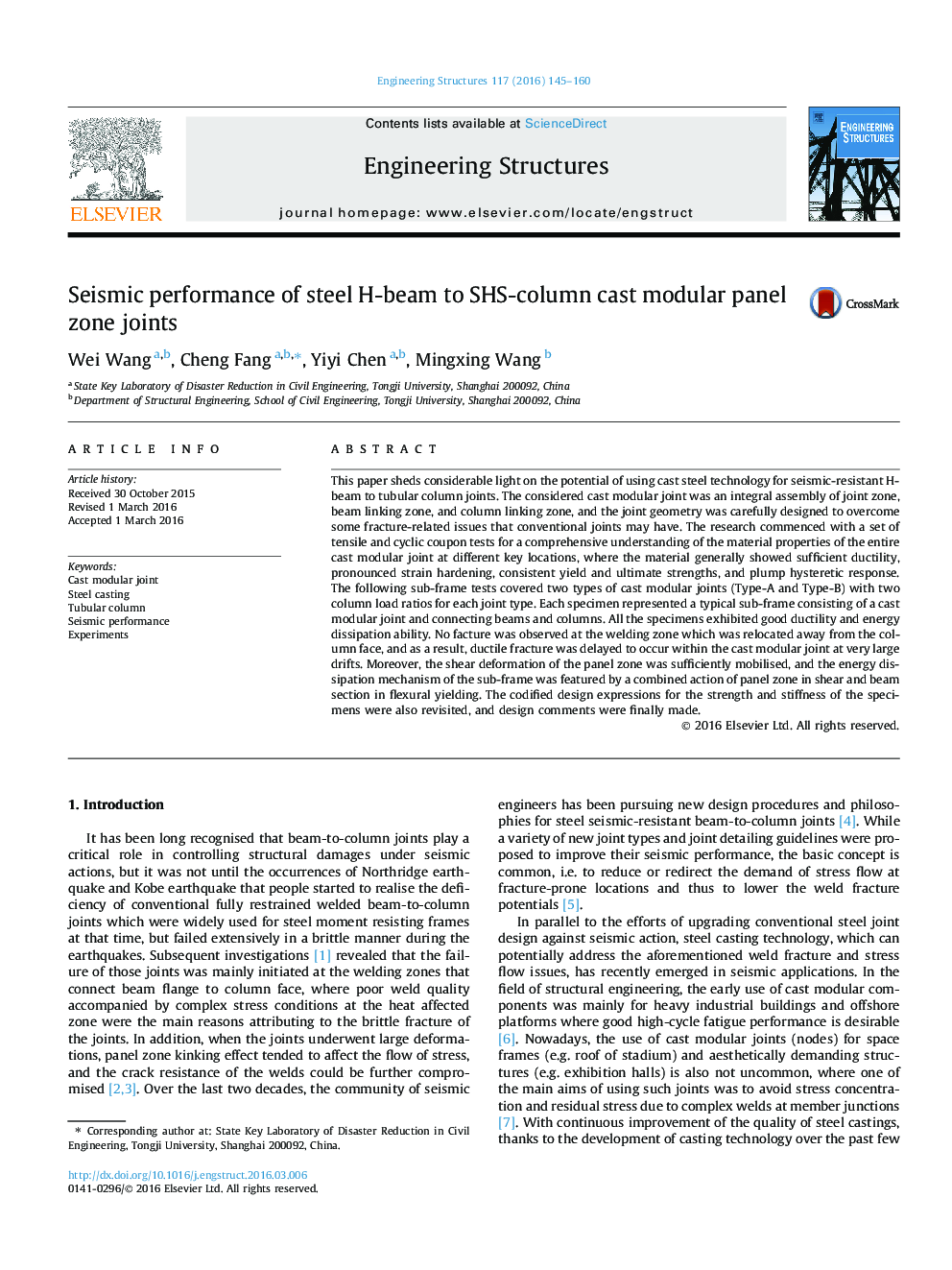| Article ID | Journal | Published Year | Pages | File Type |
|---|---|---|---|---|
| 6739941 | Engineering Structures | 2016 | 16 Pages |
Abstract
This paper sheds considerable light on the potential of using cast steel technology for seismic-resistant H-beam to tubular column joints. The considered cast modular joint was an integral assembly of joint zone, beam linking zone, and column linking zone, and the joint geometry was carefully designed to overcome some fracture-related issues that conventional joints may have. The research commenced with a set of tensile and cyclic coupon tests for a comprehensive understanding of the material properties of the entire cast modular joint at different key locations, where the material generally showed sufficient ductility, pronounced strain hardening, consistent yield and ultimate strengths, and plump hysteretic response. The following sub-frame tests covered two types of cast modular joints (Type-A and Type-B) with two column load ratios for each joint type. Each specimen represented a typical sub-frame consisting of a cast modular joint and connecting beams and columns. All the specimens exhibited good ductility and energy dissipation ability. No facture was observed at the welding zone which was relocated away from the column face, and as a result, ductile fracture was delayed to occur within the cast modular joint at very large drifts. Moreover, the shear deformation of the panel zone was sufficiently mobilised, and the energy dissipation mechanism of the sub-frame was featured by a combined action of panel zone in shear and beam section in flexural yielding. The codified design expressions for the strength and stiffness of the specimens were also revisited, and design comments were finally made.
Related Topics
Physical Sciences and Engineering
Earth and Planetary Sciences
Geotechnical Engineering and Engineering Geology
Authors
Wei Wang, Cheng Fang, Yiyi Chen, Mingxing Wang,
